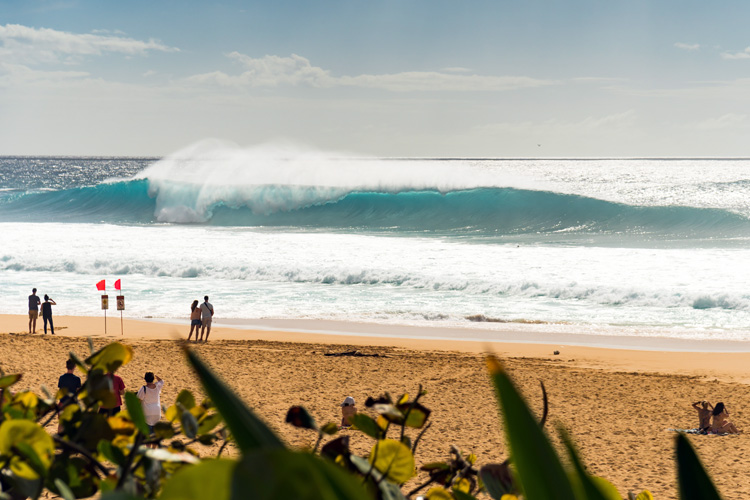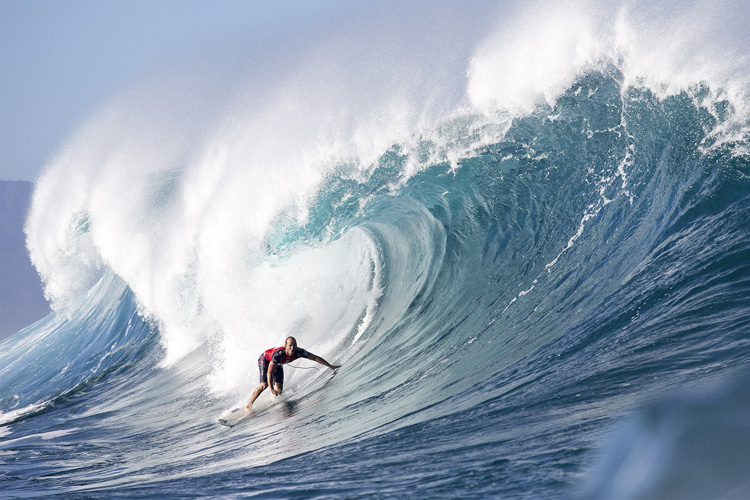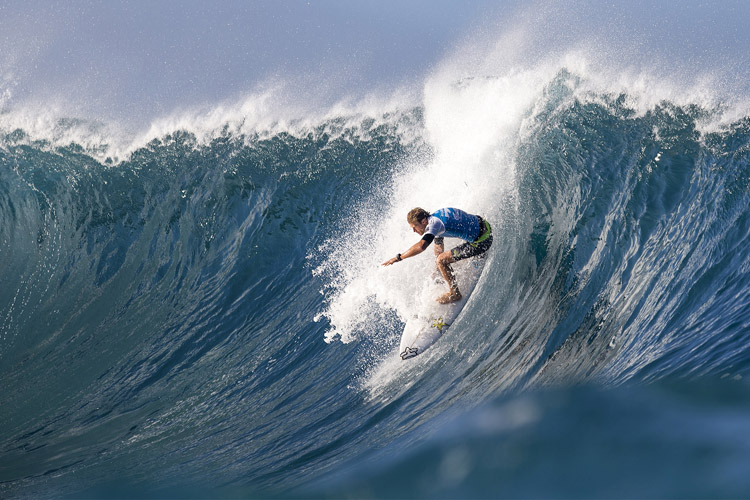A beautiful chaos, the ultimate surfing wave, a freak of nature, the advanced surfer's testing ground, a specialty wave, the premier tube riding arena, and, ultimately, the Mecca of surfing.
A lot has been said and written about Banzai Pipeline. So, where is the Banzai Pipeline?
The steep, fast Hawaiian barreling wave breaks almost all year round on the North Shore of Oahu, south of Sunset Beach, north of Log Cabins, and right in front of Kamehameha Highway.
Banzai Pipeline is one of the biggest, heaviest waves on the planet. Despite only lasting around seven seconds, a ferocious Pipe left will always spit its spray.
But before you reach its shoulder, you'll have to commit to an exigent take-off that quite often sends a large percentage of surfers over the falls.
The world's most famous wave offers a challenging left-hand experience that will not spare beginners, insecure intermediate riders, and advanced surfers with poor wave reading skills.
Phil Edwards, also known as "The Guayule Kid," was the first surfer to ride Pipeline.
In December 2016, Edwards put his name in the history of surfing, and the moment was filmed by Bruce Brown and included in the movie "Surfing Hollow Days."
At the time, Pipeline was considered an unrideable wave and unsafe surfing lineup that could only break bones and boards.
But Phil Edwards had opened a new chapter on the North Shore of Oahu, and the surfing world gained a new sanctuary.

The Queen of All Waves
Pipeline is a deadly wave. In less than a century, this blue cylinder sent hundreds of athletes to the hospital bed and claimed the lives of several wave riders.
Andy Chuda (1989), Travis Musselman (2000), Moto Watanabe (2004), Jon Mozo (2005), Malik Joyeux (2005), Joaquin Velilla (2007), and Joshua Nakata (2008) died surfing Pipeline.
The Pipeline has many faces, i.e., the spot produces a few sister waves.
There's the classic and world-renowned left-hander (First Reef, Pipe), the alternative right-hander (Backdoor), and then Second Reef and Third Reef when larger swells hit the shallow lava seabed and underwater caverns.
Pipeline is not only the capital of the so-called Seven Mile Miracle but also one of the three homes to the Triple Crown of Surfing.
The legendary Hawaiian surf break recognizes its grand gladiators. Mr. Pipeline is the title given to those who master its secrets and ride it consistently and effortlessly over the decades.
Gerry Lopez, Butch Van Artsdalen, and Mike Stewart are some of the surfers distinguished with the honorific title of Mr. Pipeline. And it's not a cakewalk.
"Eating it at Pipeline is no picnic. All I've really been doing all these years is trying to figure out how not to eat it. The rest is just trying to catch the wave, get to the end, and make a graceful exit," Gerry Lopez once said.

A Temperamental Left-Hander
Pipeline shines bright with west-northwest/northwest swells and light trade winds. It can be a bit temperamental, and the best time of the year to surf it is between October and March.
The best size to surf Pipe is when it gets chest-to-triple overhead high. The drop ignites an unforgettable adrenaline rush, but wait until you see a white lip falling and covering you like a liquid curtain before exploding in shallow waters.
Pipeline is probably the world's most filmed and photographed wave and one of the most competitive waves on the planet.
It's the birthplace of tube riding and the spot that gives name to a prestigious surfing contest - the Pipeline Masters.
It's an infamous guillotine - often crowded and dominated by local chargers - that will punish hesitations and ultra-confident haoles who think this is just another pounding beach break.
At Banzai Pipeline, a standard wipeout could have unpredictable consequences. On bigger days, this place looks and feels dangerous. When in doubt, stay out of the Pipeline.
Banzai Pipeline | ID and X-Ray
Location: West of Ehukai Beach Park, North Shore of Oahu, Hawaii;
Type of Wave: Left-hand reef break;
Swell Direction: WNW/NW;
Wind Speed and Direction: Light trade wind;
Tide: Low to mid;
Size: 4-15 feet;
Best Months: October-March;
Best Boards: Guns and shortboards;
Water Temperature: 75-80 °F;
Skill Level: Advanced and pro;
Length of the Ride: 50-100 yards, 5-10 seconds;
Access: Channel to the right;
Bottom: Lava, coral, and sand;
Hazards: Shallow waters, crowd, localism, sharks, powerful waves;
